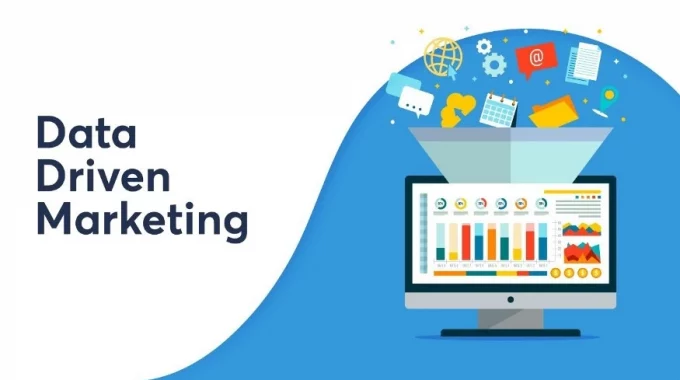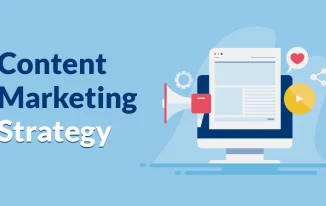Data-driven marketing spends a lot of time getting to know the target customers so that brands can provide a better customer experience.
content
Data-driven marketing is about using big data to create efficient marketing strategies. The data analysis provides insights into the user’s preferences and broader trends that impact a marketing campaign's success.
Data-driven marketing was rare, but rising customer demands have made it extremely poor. Now customers are not that easily impressed with any other advertisement, but they need to see an ad that they find relatable.
What your customers find relatable can only be discovered by studying the data. A data-driven marketing plan is now supported by the considerable quantity of information that organizations have access to.
Marketing teams collect data through important websites and, with suitable attribution modeling, can track customer interaction with the brand.
When the information analysis is finished, your marketing team can see which portion offered the highest ROI and drove more engagement. Based on this information, organizations can change their campaign to get the best returns.
Steps of data-driven marketing
Implementing a data-driven marketing plan is not child’s play and can be complicated. The complexity increases when a critical step is skipped, forcing you to backtrack and lengthen the time to value the program. Before beginning your marketing plan, review these steps and ensure you have the funds to complete each.
Determine the needed data
The type of data you need will depend on the kind of marketing programming that you plan on running. For example, to gain more user profiles for your business, you should focus on collecting consumer information.
Set vital performing indicators to determine the success of your marketing program. After figuring out the type of data you need, you will have to work with your data science team to collect and analyze the data.
If gaps exist in your current dataset, you should figure out how to fill those gaps for the marketing program’s success.
Implement the best data quality practices
You will not see positive results if your marketing program is based on inaccurate or incomplete data. As a result, your campaign may be unrelated to what your potential customers are looking for. To take care of this problem, create and maintain data quality policies.
You cannot blindly trust the data you receive; it must be checked for quality and accuracy. This ensures that your decisions are based on high-quality data. Marketing campaigns powered by high-quality data yield great results for the organization.
Benefits of data-driven marketing
Modern consumers have become highly wary of promotional messages because they are faced with many advertisements. That’s why they have become highly selective over which marketing message they engage with.
When businesses use data-driven marketing, they increase the chances of encountering prospects who are likely to be interested in their products.
With the help of data, brands can finally understand their customers' needs and regular experiences. As a result, they can create highly targeted marketing messages for potential customers. Data-driven marketing has an extremely bright future because it has some great benefits.
Better customer experience
Many customers report leaving a website before making a purchase because of a poor experience. Data-driven marketing spends a lot of time getting to know the target customers so that brands can provide a better customer experience.
Personalization helps you build a rapport with your customers, who soon start to trust your brand. That’s why data-driven marketing offers an extremely high ROI.
Spend Optimization
A common problem marketers face is figuring out where their budget is being utilized properly and where it is being completely wasted. Marketing analytics help you discover how much impact your campaign had and how much you had to spend to gain it.
This is done by examining the customer’s purchase journey utilizing attribution models, such as unified marketing measurement. For example, UMM analyzes multi-touch attribution and media-mix modeling to provide a detailed view of the path to purchase.
Now you can analyze what helps in moving prospects down in the funnel and then allocate funds accordingly. The budget’s main parameter is efficiency in acquiring a customer.
Create relevant content
Evaluating consumers gives your marketing team a good insight into what type of content the target audience is more likely to engage with. Delivering content that the audience can relate to is valuable. Unfortunately, many marketers cannot align their content with their audience’s interests.
For example, blog content has increased 800% in the last five years, but sharing has decreased by 90%. This means that the content brands produce is not what potential customers want. When you write content, think of making something shareable because that is how your brand can gain traction in the social world.
Many people are annoyed by the ads they see on the internet as they come off as spammy. It has been a long time since a good ad was released on the internet.
Marketers should think of advertisements as stories that push their products instead of being too direct. By analyzing data, you can figure out which content pieces the audience can relate to.
Better Decisions
When running a brand's marketing operations, you have to make multiple decisions. Instead of basing those decisions on instinct, it is better to base them on tested data. There is high uncertainty when your marketing campaign is based on your whim.
However, if you use a data-centered approach, the chances of success are high. When you use data, your marketing messages are more in touch with the real world than a theory.
An advertisement still needs to be able to evoke emotions in the viewers. That’s why it is best to use the data in a framework instead of relying on data blindly.
Segment your audience
Marketers cannot send the same message to every potential customer or employ the same tactics. Each customer is at a different stage of making a purchase that is why the same message will not work as effectively. However, creating personalized messages according to the specific audience segment will have a greater impact.
Increase opportunities for cross selling and up selling
Data-based marketing can provide you with insights that help you move prospects through the sales funnel quickly. Other than that, data can also help you see opportunities that you did not see before.
You can use these opportunities to cross sell or up sell your products. Data can also give you insights on how to keep customers engaged after a sale has been made.
Only if you are able to stay engaged with the customer post sale will you be able to tap unseen opportunities. If you lose contact with customer after a sale has been made, it is unlikely that they will buy your product again.
Data helps you get to know customers more efficiently. The more you know your customers, the more you will be able to come up with an offer that will tempt them to upgrade or be upsold.
Better product development
Data is not useful if you are creating products that does not solve any real problem for the customers. You should collect user data before you begin the product development cycle. A data-based marketing research effort will give you an insight into what type of products the customers will like.
It will provide you an insight into the customer’s problems and then you can create a product that solves those problems.
Challenges of data-driven marketing
While data-driven marketing has positively impacted businesses and made marketer's life easy, there are a few challenges that you will face before the full potential of data-driven marketing is realized.
Do not be invasive
Consumers do not want personalization on the cost of data transparency. Most people think their data should not be collected or used by organizations without their knowledge. If you plan to collect data from users, you should include it in the terms and conditions.
When you have the data about consumers, you should think about how to use it to make the life of consumers easier instead of freaking them out. You don’t have to display how much you know about the consumers openly.
This will scare them, and they will not even consider doing business with you. On the other hand, if you know your consumer, you can work on improving their experience by making it easy for customers to make a purchase.
Bad data quality
The data you have gathered must conform to many quality factors such as accuracy, completeness, timeliness, representatives, etc.
These quality factors ensure that the data is reliable because you are making crucial decisions based on the data. If the collected data has poor quality, your marketing campaign will have problems as you will fail to target the audience properly.
Extracting accurate information
Many organizations have spent a lot of financial resources on big data, but most have not seen any tangible result from this investment. This does not mean that big data is of no use to marketers, but it means that companies need to extract the information that can actually help them.
70 percent of marketing executives believe that data-driven marketing is crucial for their business, yet only 2 percent report seeing any crucial return on this investment. Data alone does not help a business in any way. However, data scientists can generate valuable insights from large datasets.
That is why everyone in the business world is going crazy about data science. Your data scientists can provide these insights to your marketing team, who can then make proper use of the information.
Information alone is not valuable, but information that shows a pattern or provides insight is needed. That’s why companies should focus on extracting accurate information instead of collecting huge datasets and waiting for them to make sense.
Unorganized efforts
While no one can doubt that data-centered marketing provides a great return on investment. The truth is that collecting data and gathering insights from data sets is a process that takes a lot of time and company resources.
Even if your company has the proper resources and technology, it can still be difficult to understand where to start the process. Marketing teams should have an outlined plan before they begin. It is also important to know that you cannot do everything alone, so remember to outsource some processes.
Best practices for data-driven marketing
While there are some great advantages of marketing campaigns that are powered by data. You should consider how you will collect user data and which practices best suit it.
Now, people want to control who can have their data, especially after global scandals like Cambridge Analytica. To safely collect user data in a world that is quickly becoming stringent regarding data collection policies, you must follow the best practices.
Provide real value
With the help of data driven marketing, brands can understand their customers. You will finally be able to answer the question that each customer has “what’s in it for me?”
Creating content mix that promotes product is no longer enough.
You have to step in the customer’s shoes and get to know what they find valuable. Based on the data that you have uncovered, what are the customer’s pain points? Where in the purchasing journey is the customer? Then come up with a valuable piece of content that can help the potential customers.
Highlight actual advantages
Customers are more likely to provide their information if they feel like the deal that they will get from you will not be found anywhere else. Make it clear that customers will receive something useful that will not be found anywhere else.
Differentiate yourself from other brands. You may provide potential customers with insider information in the form of a newsletter. Now marketers must highlight what potential customers can gain.
Be Transparent
Many consumers are concerned about how companies use their data and how secure the data actually is. They want to know the chances of their data being leaked in the case of a breach. Other than that they would also like to know what security measures your company takes to ensures that leaks never happen.
Your marketing team must be highly transparent about all of this with the customers. You need to find a medium to communicate this information to the customers.
Give customers the opportunity to change the data or delete their information. Being transparent with customers about data will foster trust between you and them.





